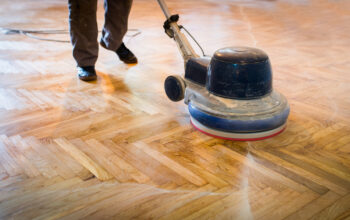If you find yourself with a sick or dying tree on your property, you may have to decide whether to remove it or simply let it die naturally. Ringwood Tree Removal can seem intimidating if you’ve never done it before, but an arborist’s report will show you the way with everything from estimating the cost of removal to keeping the surrounding area safe during the process.
This article will help you learn more about when to remove a tree and how to make the most of this important decision in your yard and neighbourhood.
Property lines
Many people are unaware of their property lines, or they assume that they are in the middle of a street. Even if you know where your property line is, there are many other factors to consider when removing a tree.
Some trees might be located within easements, which affects how your tree removal will occur. Remember to check with utility companies like power and phone providers before Tree Removal Melbourne to make sure it does not interfere with the lines.

Depth of roots
If a tree has a significant amount of roots (depth greater than three feet) that are penetrating hard surfaces such as pavement, sidewalks, and foundation walls, then the tree should be removed.
The roots can compromise the structural integrity of the surface or damage water and sewer lines.
Placement of trunk
An arborist removes a tree when its removal is deemed necessary. The reasons to remove a tree might include safety, declining health, or damage to surrounding structures.
The location of the trunk is also important; in many cases, an arborist will not remove the entire tree and instead just remove the offending part of the trunk. This can help preserve the tree for continued use and promote healthy regrowth of the remaining stump.
Deadwood (Does it stay in place or fall off?)
When it comes to deadwood, if the decayed wood falls off, then it can be a sign that the tree is experiencing decay in a large area. If the decomposing wood stays put, then this may be a good indicator that the tree is structurally sound.
If you notice increased deadwood on your tree or any other changes in your landscape, including suddenly increased leaf shedding and wilting plants, we recommend having a qualified arborist assess what might be going on with your tree.
Branches (Are they growing inside the property?)
When deciding whether to consider Tree Removal Melbourne, homeowners should also consider if the branches of the tree are growing inside their property.
For example, if there is a tree on your lawn that has large branches growing in a high and nearby location, it may be damaged by snow or ice, fall on your home, or cause power lines to come down.
Snow removal is difficult when it’s piled up around the base of the trunk.
Conclusion
Now that you know the risks of removing a tree without an arborist report, please take caution to do what is best for your yard.
Suppose you need help deciding whether or not to remove a tree from your property, contact somebody who is trained in this area. It could save your home and family from a hazardous experience.


